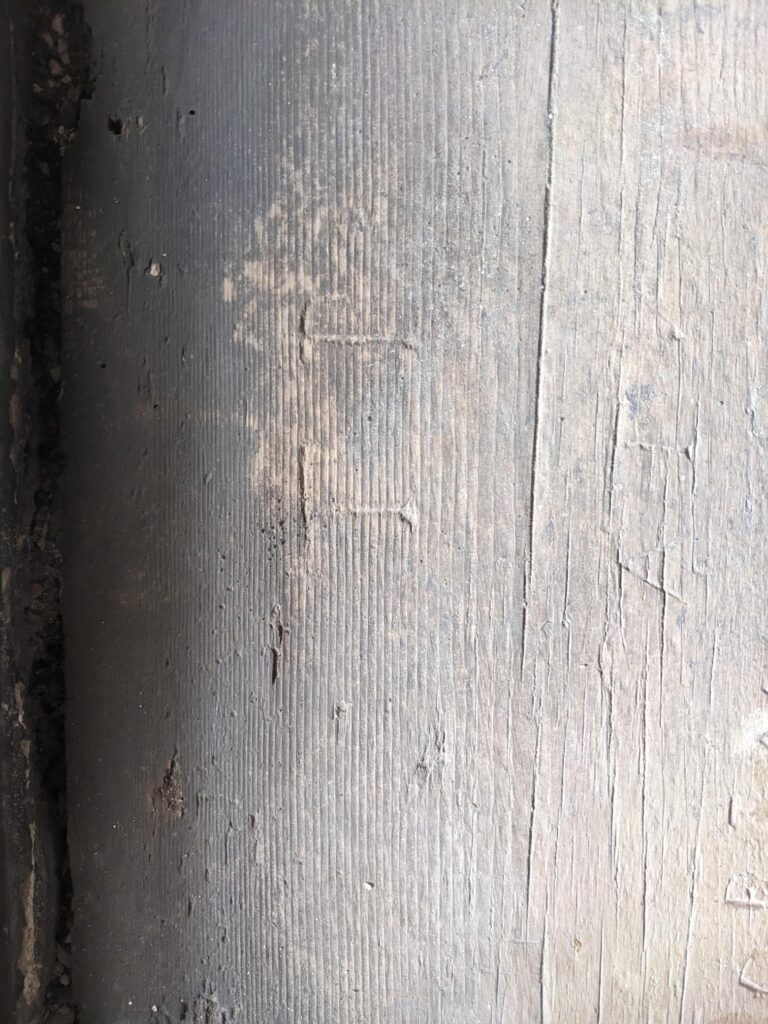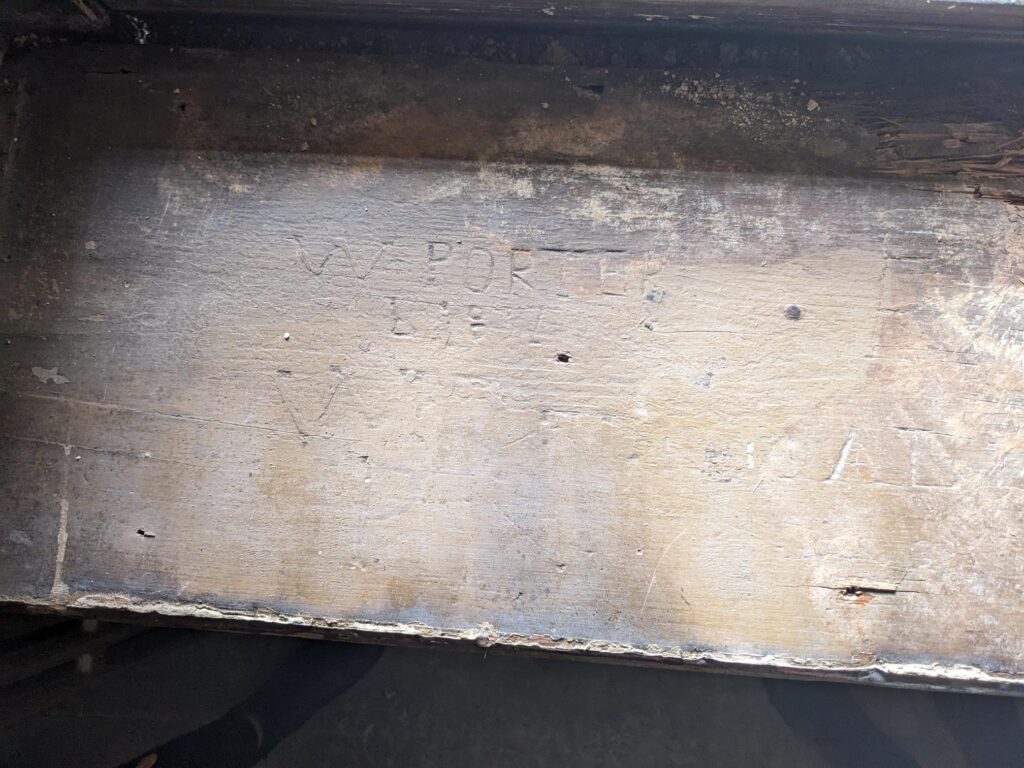My name is Alex and I’m the Engagement and Collections Manager at the Museum of Cambridge. Over the last eight months I have been managing the building works onsite at the Museum. If you’ve driven or cycled past, you will have seen our ever-growing jungle of scaffolding.
These works have been a complicated but wonderful opportunity to get to know the Museum and the White Horse Inn more intimately. Never have I ever, climbed to the roof of a 400-year-old building before and inspected timber framing, or seen the different layers of paintwork on old bricks as they are replaced.
In March 2023, the builders told me the works were going to get even more complicated as they had discovered a beam over the Dining Room window that needed to be replaced. Yikes I thought.
At this point, we had discovered new complications each time they opened up a wall, and the list of things to fix was growing. The builders muscled on and got to installing a new structural beam above our Dining Room window. This was a noisy and messy day. When the work to the window seemed complete and I felt I could relax, one of the team found me in the office and said, “You better come and see something!”
Keeping in mind, that until now, this phrase hadn’t meant anything good, I hurried to the Dining Room. What had happened was that the wood veneer window sill, added at some stage 30-40 years previously, had been removed. Underneath a large pile of dust was what our contractor was excitedly showing me.
Signatures, dates, initials and a little bit of gibberish carved into the windowsill!







These signatures are this month’s mysterious object. Their location on the window sill had been lost to the memory of the staff and volunteers at the Museum of Cambridge. Searching the names gave us nothing, no landlords, or people known to the history of the White Horse Inn.
We reached out to Museum staff as far back as we could and asked, did you know this was here? “No”, came the response, “ I don’t think I know what you’re talking about!”
A previous curator got in touch and told us a story that Enid Porter (curator 1947-1976) once shared with him about the early history of the White Horse Inn.
The White Horse Inn stands at the corner of the busy Northampton and Castle Street junction just to the north of the river. Farmers would drive their flocks of sheep or herds of cattle to Cambridge to sell at the market and stay at the White Horse Inn. When they had sold their livestock, they would be rich with cash.
In the early 19th century, the White Horse Inn had folding beds, also known as Murphy beds, that folded up against the wall. Farmers were known to hide the money they had made at the market inside the beds and mattresses. They would then claim their beds and bunks by carving their name and date near, or on the bed itself so it wouldn’t be used by another.
Could these signatures be the work of the drivers who bought and sold livestock on the Cambridge market? Or could they have been guests, patrons, or just visitors to the White Horse Inn? The mystery that we ask ourselves is, who these people are, and why did they write their names here?
Have you ever written your name somewhere, maybe somewhere you shouldn’t have? Seeing our mystery signatures makes me wonder what the historians of the future will think of when they find your signatures somewhere unexpected.
The carvings will remain on display in the Dining Room-.
